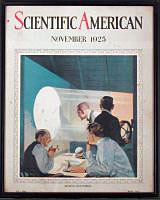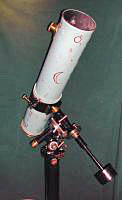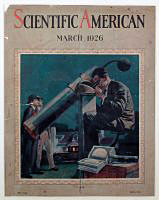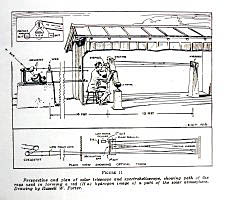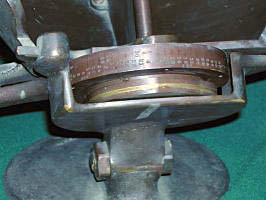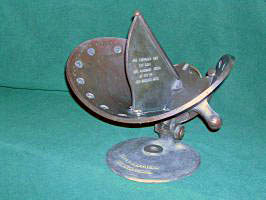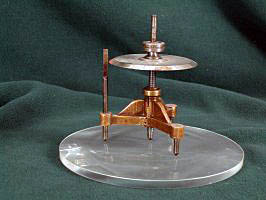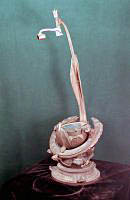

Museum: Telescopes & Artifacts
Here is a small selection of Telescopes and Artifacts from our extensive collection:
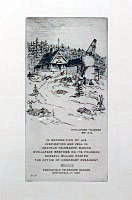
“In recognition of his inspiration and zeal in amateur telescope making
Stellafane bestows on its founder,
Russell William Porter
the office of honorary president.
Springfield
Telescope Makers,
Springfield, VT
1935.”
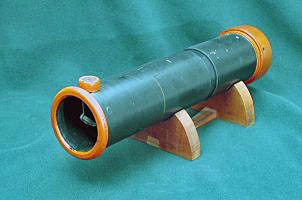
2½-inch Newtonian telescope. The mirror was ground and polished by Caroline Porter under the guidance of her father, while she was a young girl living in Springfield, Vermont, sometime between 1919 and 1929. The rest of the telescope was made by R. W. Porter.
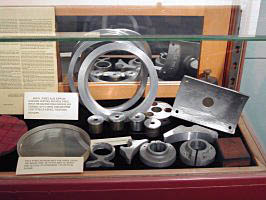
Telescope making castings sold by John M. Pierce, showing a tube cradle, mirror cell rings, eyepiece housings, focus tube holders, etc.
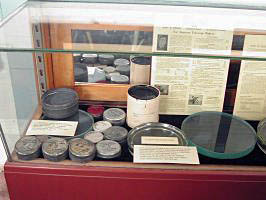
Mirror making kit sold by John M. Pierce, showing the mirror and tool blanks, abrasives in original tin cans, and pitch in original cardboard container.
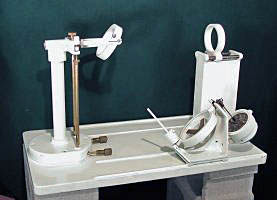
These parts belong to the spectrohelioscope invented by Dr. George E. Hale for observing the entire surface of the sun at one time and at any desired wavelength (color). The club received a diffraction grating from Porter who left to work on the 200" telescope project in November 1928 under the direction of Dr. Hale, who was also the director of the Mount Wilson observatory. Mt. Wilson was one of the few producers of high quality diffraction gratings in that era to support Hale's solar research work. The diffraction grating is the key component of a spectrohelioscope; it is used to separate sunlight into discrete wavelengths, and was an extremely expensive and scarce item as they took a very long time to make using a precision custom made ruling engine.
The club members set about building the other parts of a spectrohelioscope, and meeting minutes show that activity on the project was under way in February 1931 and continued at varying levels through at least March 1939. In 1934 the members, most of who worked at the Jones & Lamson machine tool company in town, were working there on Friday evenings and J&L had provided a basement room for this project to work in (The metal parts of the Porter Turret Telescope had been built at J&L in the late 1920's under a similar arrangement).
A major blow to the project occurred in early 1936, when the precious and expensive diffraction grating was destroyed in a fire. This event might be the major reason the project was ultimately abandoned, but as noted above some activity on it occurred at least into early 1939. There is no further mention after that, and a few years later the country entered World War II, conventions were cancelled, there was little club activity, and membership shrunk - and the Spectrohelioscope project was not resurrected until 2010. As of 2018, Stellafane has a working Hale spectrohelioscope on Breezy Hill.
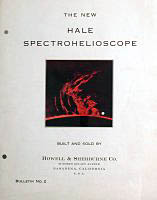
Front cover to the bulletin,
“The New Hale
Spectrohelioscope,
Built
and sold by Howell &
Sherburne Company,
Pasadena, California.”
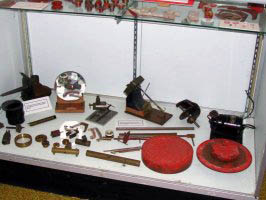
Miscellaneous telescope making parts including a pitch lap covered with original rouge, from the workshop of R. W. Porter in Pasadena, CA. Gift from Arthur S. Leonard, 1987.
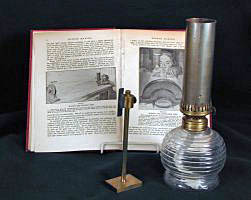
Knife edge and kerosene lamp pinhole source by R. W.
Porter as
appeared in a Porter drawing in ATM 1.
Gift from Leo J. Scanlon.
Back to the Museum Main Page
